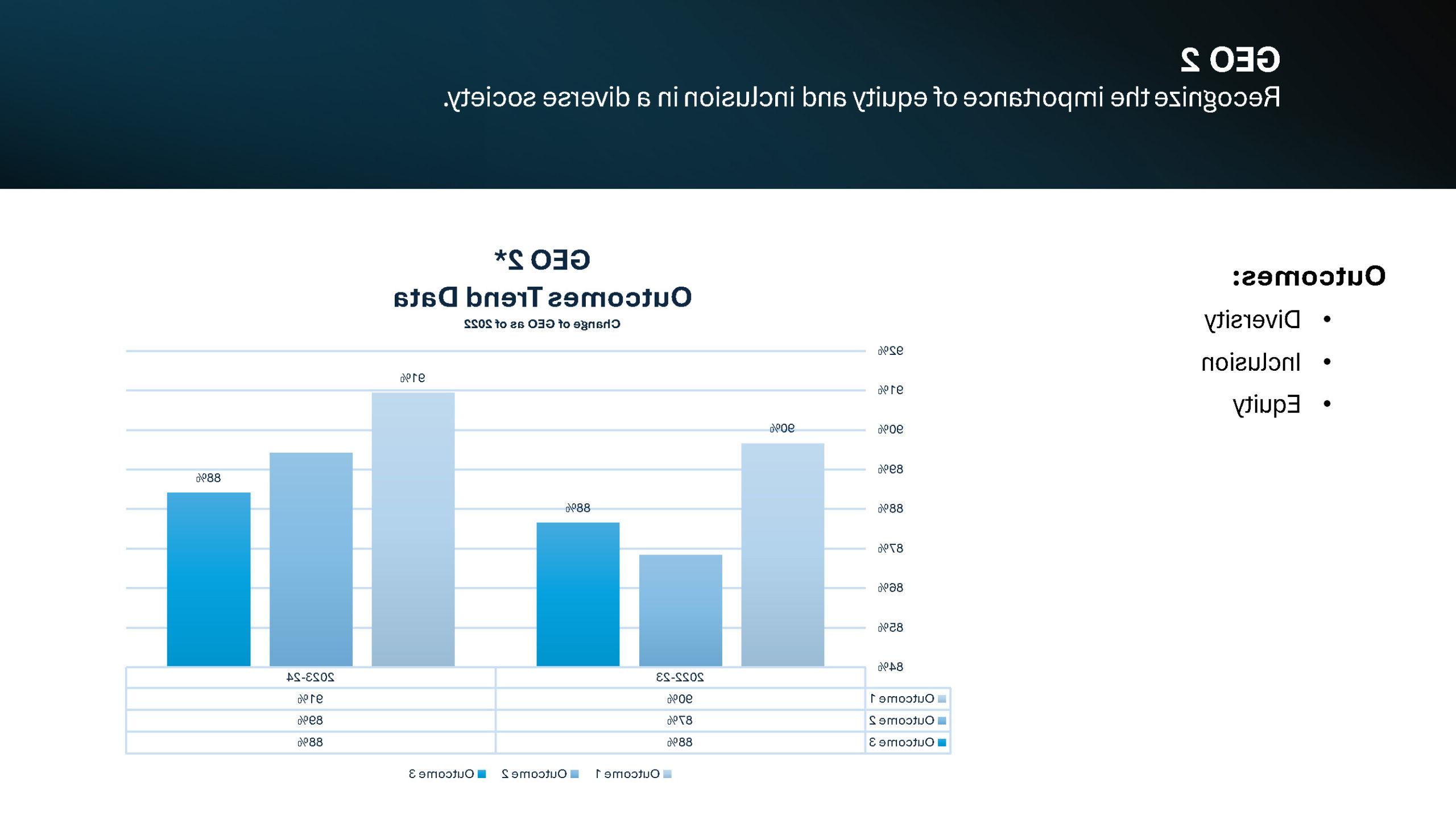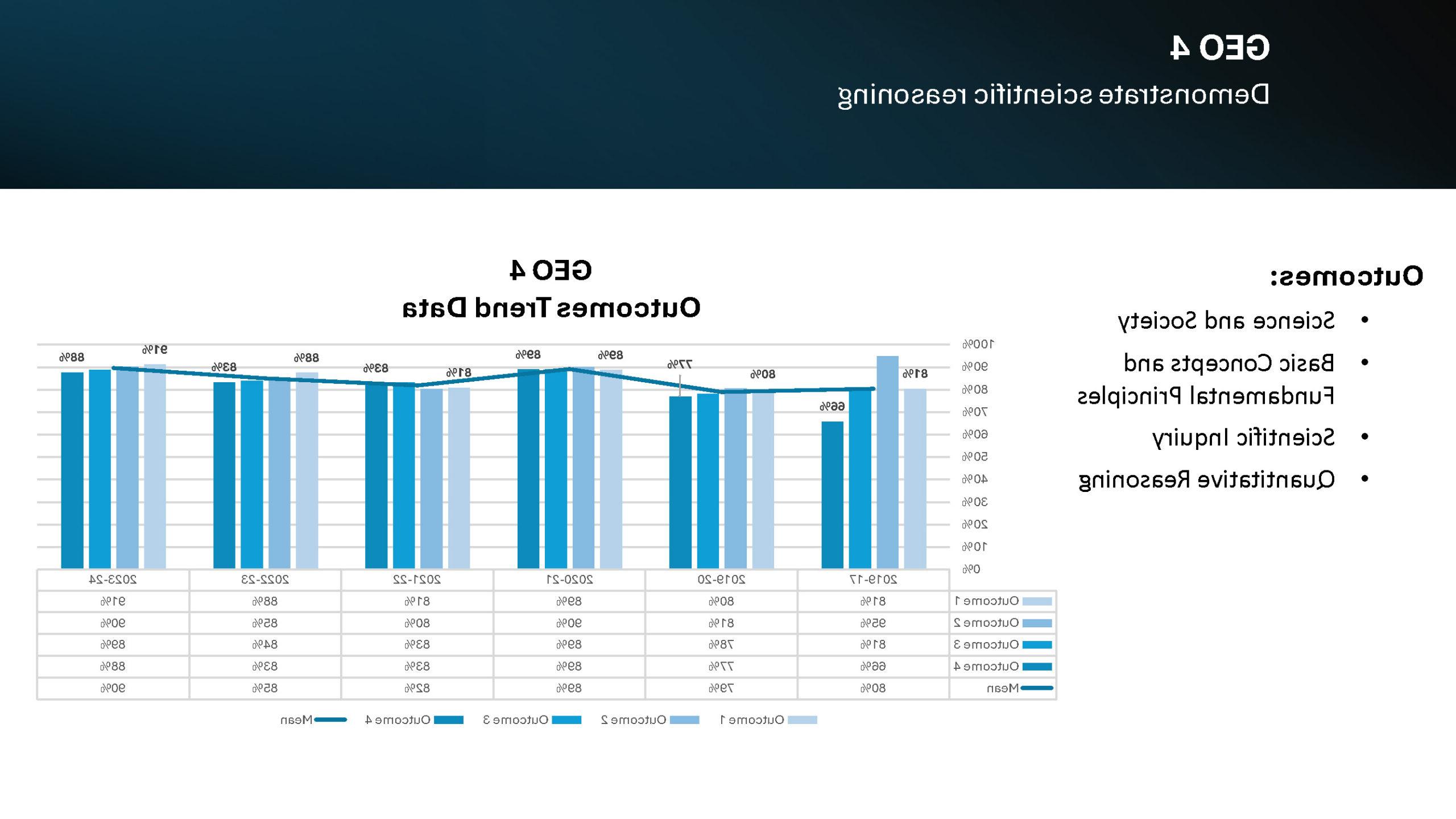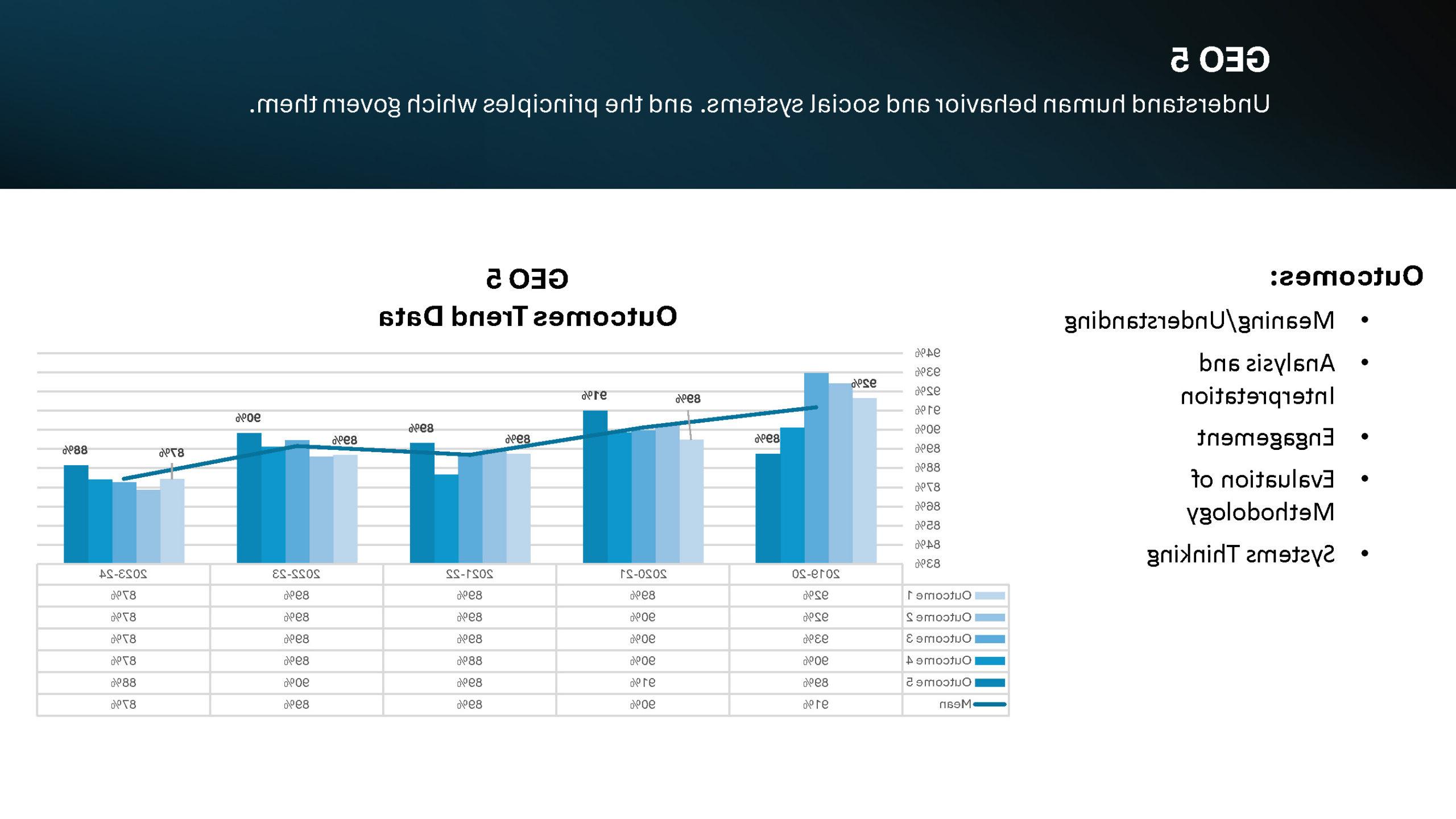Assessment of Student Learning
Located here are some helpful tools to assist you as you complete assessments and/or to understand assessment at Jackson College. View our handbook and assessment table below for explanation. Also below is a link to the official Jackson College Plan of Assessment.
At graduation, students demonstrate competency of the ILOs defined by the college through their respective program matrices.
COURSE LEVEL ASSESSMENT
Course Level Assessment is based upon the course learning objectives located in the official course outline. Analysis occurs and changes are reported (one/year) in the Report Changes to Course and Closing the Loop form (from the Official Course Outline). In addition to direct measures of student learning, faculty may also elect to sample one of more indirect measures, such as student evaluations or other surveys. Analysis occurs and changes are reported in the APRP (once/year).
Assessment at the Course Level
To what extent do students learn what they are supposed to learn in this course? How do we know?
Within the structure of each course, student learning is frequently measured. The measures vary (tests, exams, homework, research papers, laboratory evaluations, performance measures) based on the nature of the course and the specific course objectives for student learning. Typically, faculty assess more than once for each learning objective identified in the official course outline, which also by design assures equivalence across sections of a course, and provides guidance to faculty on the distribution of time and effort devoted to the identified course outcomes. Just as our classroom examples, demonstrations, and metaphors are adapted to each student and group of students, so too our means of assessment of student learning at the course level are adapted to the outcomes we expect and the goals we define for successful student performance. The aggregate of these individual measures of student learning forms the basis for assigning grades at the end of the course. While the final grade distribution reveals clearly the rate of student success, both faculty and students need more frequent and specific information if the process of learning is to succeed. Ideally, we measure learning often and provide quick, definitive and discrete feedback to students, so they can improve the efficiency of their efforts. At the same time, we realize nearly effortless improvements in delivery; as we get to know our students and their abilities better, we provide better instruction. On some occasions, we craft major changes in a course, and then evaluate how those changes impact subsequent student learning. Ultimately, the common goal of improved student learning and efficient teaching is realized. This cycle of continuous measurement, evaluation, and improvement guides our efforts.
As faculty, we report our course level assessment experiences in our APRP each spring semester. We may also find common ground and common goals by sharing our experiences with colleagues, particularly colleagues who teach the same course or courses. Because we measure student learning in consistent ways, we can track improvement over time. We may also use this information to assist new faculty as they acculturate to JC, and to document the need for additional funding for course level improvements in equipment, materials, or scheduling formats. As both teachers and learners, we may also choose to share our experiences with colleagues across disciplines or departments, learning from each other and adopting each other’s practices when advantageous to do so. Indeed, sharing our experiences with helping students learn often leads to cross-discipline classroom visits and improved collegial relationships.
Classroom Assessment Techniques
How successful was this class session? How do we know?
Within courses, but not part of course assessment strategies, is a special role for classroom assessment techniques, a procedure made popular by Angelo and Cross (19xx). Procedures such as the One Minute Paper, the Muddiest Point, or the Critical Incident Assessment Questionnaire, help us to know what students learned or failed to learn during a specific class session. These assessments, usually anonymous, help us to fine-tune our instruction, but are patently insufficient as direct measures of student achievement of the learning outcomes for the course. Nonetheless, they are often very informative and helpful, and are to be encouraged. Moreover, their use conveys to students our tactical commitment to improvement of student learning, and signifies that we are a learning organization.
Course Review
Course review occurs to assure that each reference to the course and each section taught adheres to the same basic standards for the course. It monitors the documentation of the course, the quality of the course across sections, the currency and the transferability. This process occurs for each course once every five years.
Assessment at the Program or Discipline Level
How well does this program prepare students for work or transfer? How do we know?
While some students enroll in one or a few courses to satisfy their goals, many students pursue programs of study designed to provide employable skills or to facilitate transfer to a university. Each type of program has unique expectations of student achievement in terms of knowledge, skills, and abilities, and each program measures them in highly articulated fashion. Where appropriate, such strategies as capstone courses, portfolios, summative performance measures, and external validation measures such as licensure exams and transfer experiences, may all play a role. In addition, across all types of programs, faculty are sensitive to issues of student persistence and retention, rates of successful completion of courses within the program, and the extent to which students in later courses are integrating content and concepts across courses within the program. In some cases, measures of student achievement at the program or discipline level are based on direct demonstration of achievement in specific courses focused on capstone or integrative skills. In other cases, measures are more difficult to craft, and assignments are designed to elicit evidence of successful attainment. In many occupational programs, faculty confer with each other as a result of their supervision of students in performance environments. In transfer-oriented or pre-baccalaureate programs, faculty within the core discipline(s) identify integrative abilities expected of students who have successfully completed a significant course sequence, and create means to assess those outcomes. At the program or discipline level, assessment is focused on the core competencies integral to the program, and the abilities of students at program completion, whether their goals are employment, transfer, or both.
Assessment outcomes at the program or discipline level are reported as part of the program/discipline review process, which occurs on a five-year basis. Generally, the review of these data stimulates discussion among program or discipline faculty, which often leads to plans for improvement of student learning. Additionally, the reporting of these data at Academic Council often stimulates further discussion and may lead to innovative action plans, the outcomes of which are similarly focused on improvement of student learning and performance.
Program and Discipline Review
Program and discipline reviews assess how well the program or discipline prepares the student for work or for transfer. This process occurs on a five-year basis.
- Program Review Template
- Discipline Review Template
- Program Curriculum Matrix Template and Instructions
GENERAL EDUCATION OUTCOMES (GEO) AND INSTITUTIONAL LEARNING OUTCOMES (ILO)
Assessment of General Education at the Degree Level
Each college or university defines general education in a way consistent with their mission and student population. At Jackson College, our definition is reflected in both our published philosophy of general education, and in our assessment strategies.
General Education Philosophy
A message to students from JC faculty:
General education facilitates the development of an informed and educated person who recognizes and respects the diversity of communities, thinks critically and is proficient at fundamental skills. General education engages students in active learning by providing opportunities to observe, analyze and evaluate, and to apply these skills critically to problems. General education fosters the development of responsible, ethical human beings dedicated to improving their own lives and the lives of others through work, family life, social and political action, cultural awareness and service to others.
Because JC’s vision includes a variety of educational, cultural and economic goals, the general education requirements involve both traditional intellectual pursuits and practical skill development. As the general education requirements are designed to ensure breadth and depth of knowledge, they are met through carefully designed programs of study. Programs of study help students meet these goals by addressing each of the skill areas identified in the General Education Outcomes. These are skills which the JC Board of Trustees has determined students should develop or enhance while enrolled in the college.
General Education Outcomes (GEO)
Because the vision of Jackson College includes a variety of educational, cultural and economic goals, the general education requirements involve both traditional intellectual pursuits and practical skill development. As the general education requirements are designed to ensure breadth and depth of knowledge, they are met through carefully designed programs of study. Programs of study help students meet these goals by addressing each of the skill areas identified in the General Education Outcomes. These are skills which the Jackson College Board of Trustees has determined students should develop or enhance while enrolled in the college.
| GEO | Description | Core Competence | Contextual Competence |
|---|---|---|---|
| 1 | Write clearly, concisely and intelligibly | GEO 1 Core Rubric | GEO 1 Contextual Rubric |
| 2 | Recognize the importance of equity and inclusion in a diverse society | GEO 2 Core Rubric | GEO 2 Contextual Rubric |
| 3 | Demonstrate computational skills and mathematical reasoning | GEO 3 Core Rubric | GEO 3 Contextual Rubric |
| 4 | Demonstrate scientific reasoning | GEO 4 Core Rubric | GEO 4 Contextual Rubric |
| 5 | Understand human behavior and social systems and the principles which govern them | GEO 5 Core Rubric | GEO 5 Contextual Rubric |
| 6 |
Identify artistic, linguistic, and theoretical perspectives across the human experience |
GEO 6 Core Rubric | GEO 6 Contextual Rubric |
Institutional Learning Outcomes (ILO)
In addition to the GEOs, the college is committed to helping students develop three Institutional Learning Outcomes. These skills are embedded in each program of study, and are shaped by the program focus and the pathway within which the program is hosted.
| ILO | Description | Contextual Competence |
|---|---|---|
| 1 | Think critically and act responsibly | ILO 1 Rubric |
| 2 | Work productively with others, recognizing individual contributions to group success | ILO 2 Rubric |
| 3 | Exhibit technological literacy | ILO 3 Rubric |
Assessment of General Education Outcomes and Institutional Learning Outcomes
At graduation, to what extent have students achieved the transcendent abilities defined by the college? How do we know?
Students are certified eligible for graduation only on the professional judgment of the faculty. Only faculty members can recommend a student for the award of college credit, and for an associate degree or certificate of program completion. As a faculty, we have collectively identified ten major outcomes we expect students to achieve prior to the awarding of the associate degree. Not coincidentally, we refer to these competencies or abilities as General Education Outcomes (GEOs) and Institutional Learning Outcomes (ILOs). While each graduating student will achieve each outcome, each will, depending on program of study, achieve these outcomes in various ways, just as Rome can be reached via various roads. Similarly, virtually all faculty members in all courses contribute some effort to the development of these outcomes.
Just as the pathways to the achievement of the GEOs and ILOs vary, so too do the strategies faculty members employ to develop these abilities in their students, and the methods faculty use to assess student achievement of these outcomes. To make the assessment of student achievement at the degree level both possible and meaningful, faculty employ various strategies to assess these outcomes. To facilitate this effort, guidance is at hand. Working cooperatively with the General Education Committee, the Assessment Committee drafted templates of rubrics for the specification of learning outcomes and their assessment, for each GEO at both the core competence and contextual competence levels. While the specifications of student competencies (leftmost two columns in each rubric) are fixed or consistent, the strategies for assessment and success criteria are adapted for each general education course and for each program or pathway. General Education courses are designed to develop these outcomes at the level of core competence, while the level of contextual competence is developed by the student’s entire program of study. For each general education course, responsible (lead) faculty members edit the rubric to identify the strategies which the course will use to achieve the GEO outcomes. Assessment at the level of core competence is conducted whenever the course is offered, and the results are reported to the assessment committee by the lead faculty member for the course, at least annually. In this effort, lead faculty have a special role in aggregating data across sections of a course. The assessment committee provides forms for individual faculty, both full-time and adjunct, to easily report their individual course section data to the lead faculty member, who then forwards the aggregated data electronically to the committee.
The assessment of GEOs and ILOs at the contextual competence level is conducted as follows:
- Assessment of GEOs at the contextual competence level is conducted on a cyclical basis, with one GEO selected each year.
- Assessment of ILOs is defined by the college, through respective program matrices.
Students in or approaching their final enrollment period prior to graduation will be selected to participate in an activity developed by the most qualified faculty members in collaboration with the assessment committee and tailored to the specific pathway or program. Assessment data and examples of student performance will be submitted to the assessment committee for analysis.







